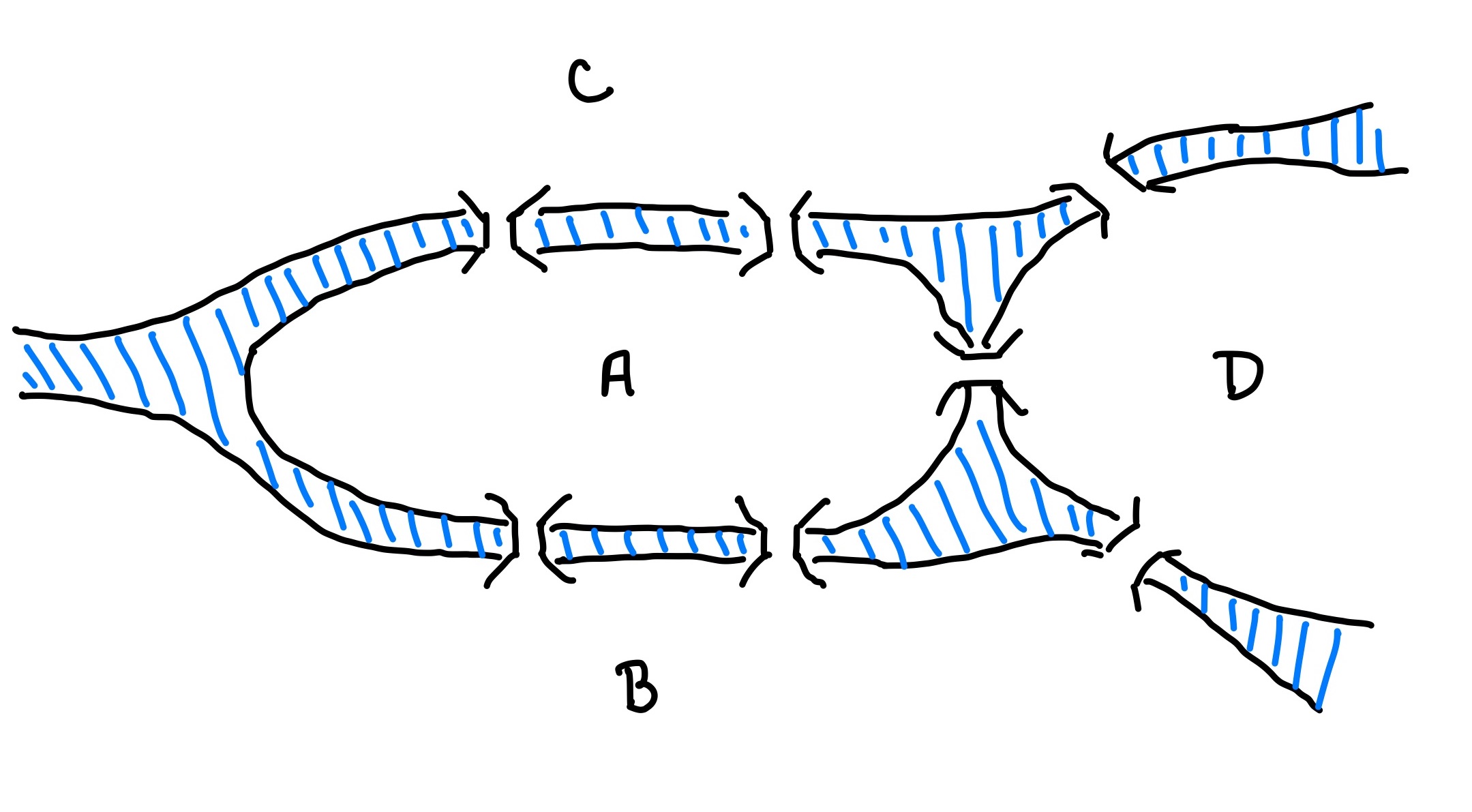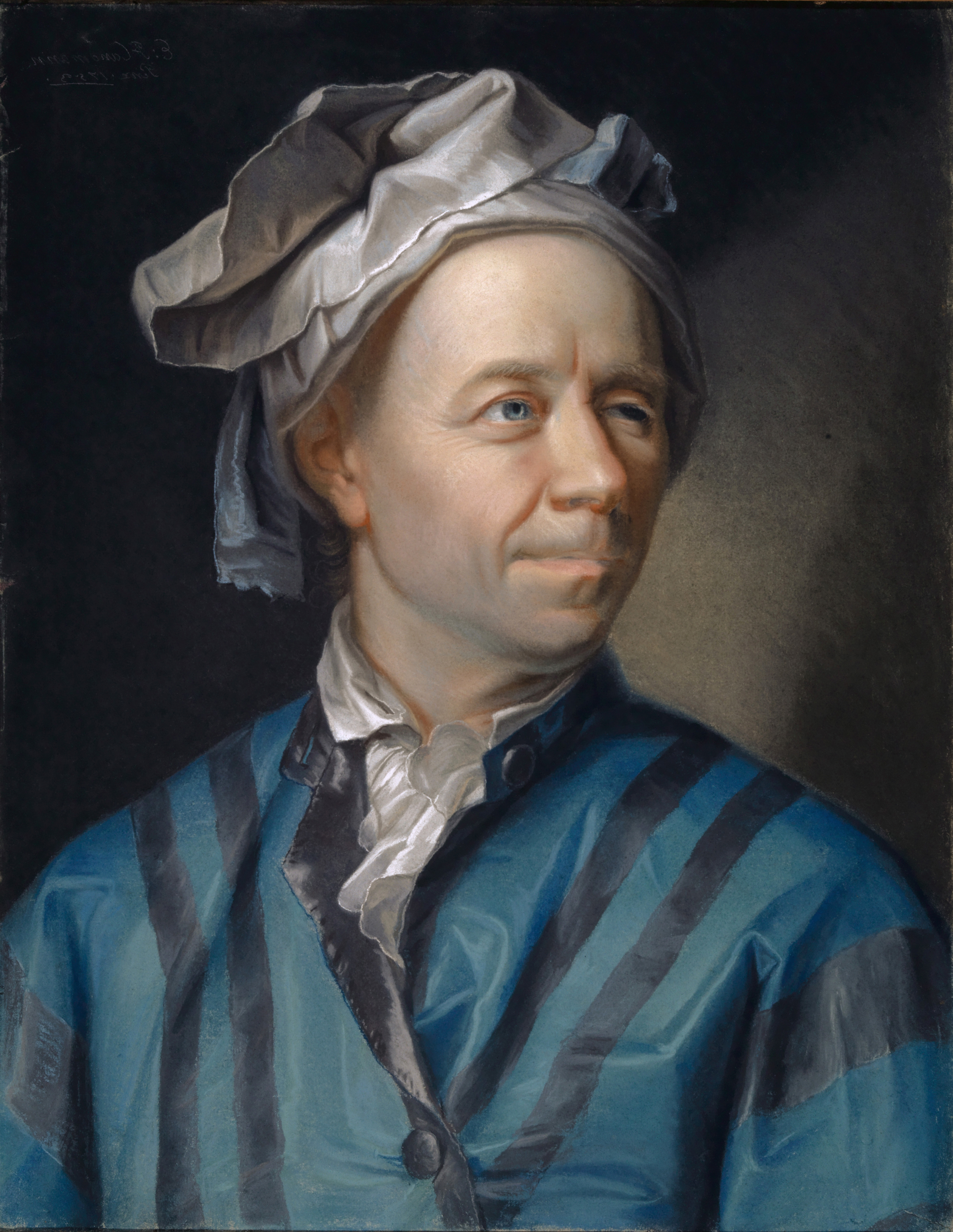Lecture 13: Bridges, Graphs, and Greed
COSC 311 Algorithms, Fall 2022
$ \def\compare{ {\mathrm{compare}} } \def\swap{ {\mathrm{swap}} } \def\sort{ {\mathrm{sort}} } \def\insert{ {\mathrm{insert}} } \def\true{ {\mathrm{true}} } \def\false{ {\mathrm{false}} } \def\BubbleSort{ {\mathrm{BubbleSort}} } \def\SelectionSort{ {\mathrm{SelectionSort}} } \def\Merge{ {\mathrm{Merge}} } \def\MergeSort{ {\mathrm{MergeSort}} } \def\QuickSort{ {\mathrm{QuickSort}} } \def\Split{ {\mathrm{Split}} } \def\Multiply{ {\mathrm{Multiply}} } \def\Add{ {\mathrm{Add}} } \def\cur{ {\mathrm{cur}} } $
Announcements
- Midterm next Friday
- Material up to lecture 12 covered
- Makeup date following week
- Accommodations
- Study guide posted this weekend
- Topics
- Example questions
- Solutions
Overview
- Bridges of Königsberg
- Graphs
- Greedy Algorithms
Bridges of Königsberg

Question. Is it possible to walk around Königsberg, cross every bridge exactly once, and return to where you started?
A Result
Question. Is it possible to walk around Königsberg, cross every bridge exactly once, and return to where you started?

Theorem (Euler, 1736). No.
Abstraction
- Replace each separate landmass with a single point
- all points in each landmass are reachable from each other without crossing a bridge
- Represent each bridge with an “edge” connecting landmasses

Graphs
A graph $G = (V, E)$ consists of
- a set $V$ of vertices or nodes
- a set $E$ of edges, where each edge consists of a pair of nodes
- if $e = (u, v)$ an edge, we say $u$ and $v$ are adjacent
- $G$ a multigraph if multiple edges between same pair of vertices
Example. Königsberg graph
Paths and Circuits
Note. Terminology varies from source to source.
A path $P$ of length $k$ in $G$ is a sequence of the form $v_0 e_1 v_1 e_2 v_2 \cdots e_k v_k$ where
- each $v_i$ is a vertex, and
- each $e_i$ is an edge with $e_i = (v_{i-1}, v_i)$.
$G$ is connected if for every pair of vertices $u, v \in V$, there is a path from $u$ to $v$.
$P$ is a circuit if $v_0 = v_k$.
Examples
BoK as a Graph Problem
Original Question. Is it possible to walk around Königsberg, cross every bridge exactly once, and return to where you started?
Rephrasing as Graph Problem. Given a graph $G = (V, E)$, is there a circuit that contains every edge $e \in E$ exactly once?
- A graph with this property is called Eulerian.
General Questions
Question 1. Under what conditions is a graph $G$ Eulerian?
Question 2. If $G$ is Eulerian, how can we find an Eulerian circuit?
Simple Examples
Degrees
Let $G = (V, E)$ be a graph, and $v \in V$ a vertex. The degree of $v$, $\deg(v)$ is the number of edges in $E$ incident to $v$.
- $G$ is even if all vertices have even degree
A Necessary Condition
Claim (Euler 1736). If $G$ is Eulerian, then every vertex has even degree.
Why?
- Suppose $u$ is a vertex other than starting vertex
- Eulerian circuit visits $u$ total of $k$ times
- Each visit must
- cross one bridge to enter
- cross another to exit
- Circuit crosses every bridge to $u$ exactly once
- $\implies$ degree of $\deg(u) = 2 k$
Question
If all vertices have even degrees, is $G$ necessarily Eulerian?
A Result
Theorem (Euler 1736). If every vertex $v$ in a graph $G$ has even degree and $G$ is connected, then $G$ is Eulerian.
Proof technique:
- Devise an algorithm to find an Eulerian cycle
Algorithmic technique:
- Go wild!
- wander aimlessly crossing only uncrossed bridges
- greedily collect new bridges to cross
- continue until you reach your starting point
- reassess
- wander aimlessly crossing only uncrossed bridges
Finding a Circuit
Input:
- graph $G$
- set $V$ of vertices
- set $E$ of edges
- starting vertex $v \in V$
- assume all vertices have even degree ($G$ is even)
Output:
- a circuit $P = v_0 e_1 v_1 e_2 v_2 \cdots e_k v_k$ with $v_0 = v_k = v$
- every edge $e$ incident to $v$ is contained in $P$
Illustration of Technique
FindCircuit Subroutine
FindCircuit(V, E, v):
cur <- v
P <- v
while deg(cur) > 0
e <- any edge in E incident to cur
(prev, cur) <- e
append e, cur to P
remove e from E
if deg(prev) = 0 then remove prev from V
endwhile
remove cur from V
return P
Circuit Finding
Claim. If every vertex in $G = (V, E)$ has even degree, then FindCircuit(V, E, v) returns a circuit beginning and ending at $v$.
- Loop invariant. If $\cur \neq v$, then $\cur$ and $v$ have odd degress, while all other vertices have even degrees.
-
Consequence. If $\deg(\cur) = 0$, then $\cur = v$.
- $\implies$ can only get “stuck” at starting point!
Finding Eulerian Circuits
Strategy.
- Apply
FindCircuitto find a circuit $P = v_0 e_1 v_1\cdots v_k$ - Traverse $P$
- if a vertex $v_i$ with $\deg(v_i) > 0$ is encountered,
- apply
FindCircuitto $v_i$ to get a circuit $Q$ - splice $Q$ into $P$ at $v_i$
- apply
- continue traversing $P$ (with $Q$ spliced in)
- if a vertex $v_i$ with $\deg(v_i) > 0$ is encountered,
Example
Eulerian Circuit Pseudocode
EulerCircuit(V, E, v):
P <- FindCircuit(V, E, v)
for each edge e = (u, w) in P do
if deg(w) > 0 then
Q <- EulerianCircuit(V, E, w)
Splice(P, Q, w)
endif
endfor
Correctness
Claim. If $G$ is even and connected, then EulerCircuit returns an Eulerian circuit.
Argue by induction on $m = $ number of edges in $G$.
Base Case, $m = 0$. If $G$ is connected and has no edges, then $G$ has only one vertex, so EulerCircuit correctly outputs an Eulerian circuit (of length $0$)
Inductive Step
Suppose EulerCircuit finds an Eulerian circuit on all connected, even graphs with fewer than $m$ edges. Then:
- After removing $P$ from $G$, $G$ has fewer than $m$ edges
- $G$ is still even
- $G$ may be disconnected, but all components touch $P$
- By inductive hypothesis,
EulerCircuitfinds Eulerian circuit in each component - Splicing together circuits gives Eulerian circuit for whole graph
Conclusion
$G$ is Eulerian if and only if $G$ is even and connected.
If $G$ is Eulerian, then an Eulerian circuit can be found by greedily traversing the graph,
Next Time
More (greedy) graph algorithms!